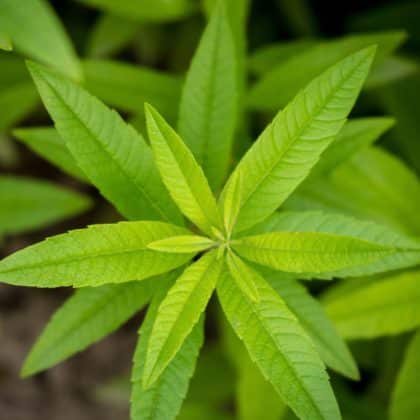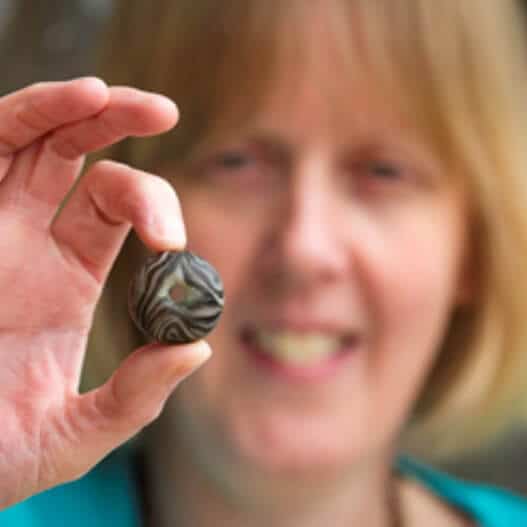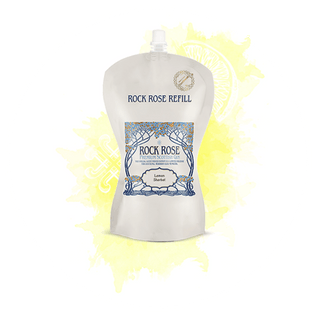Lemon verbena (Aloysia citrodora) also known as Herb Louisa is a species of flowering plant in the verbena family  Verbenaceae, native of Argentina, Chile, Peru, and Uruguay. The glossy, pointed leaves of this botanical are slightly rough to the touch and emit a strong citrus aroma when bruised, hence the Latin epithet citrodora – lemon-scented. This botanical has much brighter citrus notes than either lemon balm (Melissa officinalis) or lemon thyme (Thymus citriodorus).
Verbenaceae, native of Argentina, Chile, Peru, and Uruguay. The glossy, pointed leaves of this botanical are slightly rough to the touch and emit a strong citrus aroma when bruised, hence the Latin epithet citrodora – lemon-scented. This botanical has much brighter citrus notes than either lemon balm (Melissa officinalis) or lemon thyme (Thymus citriodorus).
Although native to South America, lemon verbena has been cultivated in Europe for centuries. It is first mentioned in botanical literature by a French naturalist who noticed it in South America, whilst circumnavigating the globe between 1766–1769. Lemon verbena was introduced to Europe by the Portuguese and Spanish in the 18th century. At this time, it was mainly cultivated for its oil but became less popular due to the discovery of the more economical lemongrass (Cymbopogon). Botanical literature indicates that the name Herb Louisa (hierba luisa in Spanish) comes from the Latin name of the genus Aloysia which commemorates Maria Luisa Teresa of Parma (1751–1819), wife of King Charles IV of Spain, who grew lemon verbena in the Royal Garden at Madrid.
The archaeological evidence indicates that lemon verbena has been used as an ingredient in South American cooking and folk 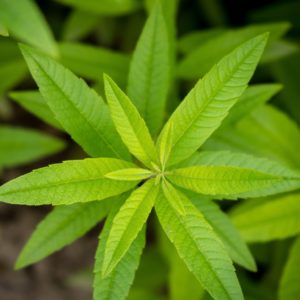 medicine since ancient times. It is believed that the Inca Empire (circa 1200–1572), were the first people to discover the medicinal benefits of this botanical which has antioxidant, anti-anxiety, and anti-inflammatory effects. The Inca Empire was the largest empire in pre-Columbian America. The administrative, military, and political centre of the empire was the city of Cusco in the Peruvian Andes. The Inca boiled the leafy stems of lemon verbena to make a medicinal tea. In South American folk medicine, lemon verbena tea has a long history as a trusted botanical for reducing fevers and treating a variety of digestive disorders including constipation, diarrhoea, and flatulence. In Argentina lemon verbena tea is used as an antidote for the bites of poisonous animals.
medicine since ancient times. It is believed that the Inca Empire (circa 1200–1572), were the first people to discover the medicinal benefits of this botanical which has antioxidant, anti-anxiety, and anti-inflammatory effects. The Inca Empire was the largest empire in pre-Columbian America. The administrative, military, and political centre of the empire was the city of Cusco in the Peruvian Andes. The Inca boiled the leafy stems of lemon verbena to make a medicinal tea. In South American folk medicine, lemon verbena tea has a long history as a trusted botanical for reducing fevers and treating a variety of digestive disorders including constipation, diarrhoea, and flatulence. In Argentina lemon verbena tea is used as an antidote for the bites of poisonous animals.
Lemon verbena was a very popular scent with Victorian ladies who sewed the fragrant leaves into the darts of their dresses, tucked them into their handkerchiefs and nosegays, and floated them in finger bowls of water. In the 1939 film ‘Gone with the Wind’, lemon verbena is mentioned as the fragrance favoured by the heroine Scarlett O’Hara’s mother. Considered the queen of aromatic herbs, lemon verbena, is commercially cultivated in Algeria, France, and Morocco. The dried leaves of lemon verbena are added to potpourri for scent. The essential oil distilled from this botanical is used to provide aroma in candles, cosmetics, liqueurs, perfume, and soft drinks.
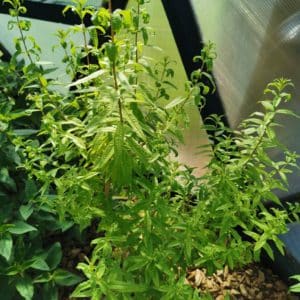 Due to its many culinary uses, lemon verbena is often marketed as a plant for the herb garden. Whole leaves can be used to add a lemon flavour to fish and poultry dishes, cold drinks, marinades, puddings, and salad dressings. Leaves can be placed at the bottom of a cake tin to flavour a cake whilst baking. Whilst the smaller leaves can be added to fruit salads, sorbets, or shredded on top of ice cream. The leaves make a relaxing herbal tea, used alone or in combination with other herbs. Lemon verbena tea is thought to boost the immune system and act as natural aid for weight loss. In gin production, the leaves of this perennial, woody shrub add a bright citrus flavour with a lemon sherbet-like finish.
Due to its many culinary uses, lemon verbena is often marketed as a plant for the herb garden. Whole leaves can be used to add a lemon flavour to fish and poultry dishes, cold drinks, marinades, puddings, and salad dressings. Leaves can be placed at the bottom of a cake tin to flavour a cake whilst baking. Whilst the smaller leaves can be added to fruit salads, sorbets, or shredded on top of ice cream. The leaves make a relaxing herbal tea, used alone or in combination with other herbs. Lemon verbena tea is thought to boost the immune system and act as natural aid for weight loss. In gin production, the leaves of this perennial, woody shrub add a bright citrus flavour with a lemon sherbet-like finish.
By Joanne Howdle, our Tour and Events Co-ordinator.


